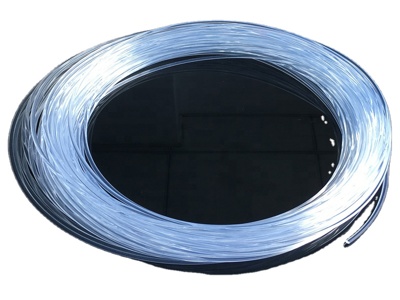
В современном мире мода постоянно эволюционирует, стремясь к новым высотам инноваций и устойчивости. Одним из наиболее перспективных материалов, который завоёвывает внимание дизайнеров и потребителей, являются яркие полиэфирные волокна. Эти волокна не только предлагают невероятную палитру цветов и текстур, но и воплощают в себе принципы экологичности и технологического прогресса. В этой статье мы подробно рассмотрим, почему полиэфирные волокна становятся символом моды будущего, их преимущества, применение в индустрии и то, как они могут изменить наш подход к одежде и стилю.
Полиэфирные волокна, известные своей прочностью, долговечностью и способностью удерживать яркие цвета, уже давно используются в текстильной промышленности. Однако с развитием технологий они приобрели новые качества: улучшенную экологичность за счёт переработки и биоразлагаемых вариантов, а также инновационные методы окраски, которые делают их ещё более привлекательными для модной индустрии. Сегодня эти волокна не просто функциональны – они становятся центральным элементом трендов, сочетая эстетику с ответственностью перед планетой.
В первой части статьи мы углубимся в историю и развитие полиэфирных волокон, объясняя, как они эволюционировали от простых синтетических материалов до высокотехнологичных решений. Мы обсудим ключевые этапы их создания, от сырья до готовых продуктов, и почему именно яркие варианты стали так популярны. Это поможет понять фундамент, на котором строится их успех в моде.
Далее, мы explore the advantages of polyester fibers, focusing on their durability, color retention, and comfort. Unlike natural fibers, polyester can withstand multiple washes without fading, making it ideal for everyday wear and high-fashion pieces. Its moisture-wicking properties also add to comfort, keeping the wearer dry and comfortable in various conditions. These benefits make it a go-to choice for athletes, fashion enthusiasts, and everyone in between.
Another critical aspect is sustainability. With growing environmental concerns, the fashion industry is under pressure to adopt greener practices. Polyester fibers, especially those made from recycled materials like PET bottles, offer a solution. They reduce waste and energy consumption compared to virgin polyester production. We'll delve into how brands are incorporating these eco-friendly options into their collections, aligning with consumer demands for sustainable fashion.
Innovation in dyeing techniques has also played a significant role. Traditional dyeing processes can be water-intensive and polluting, but new methods, such as digital printing and eco-dyes, allow for vibrant colors with minimal environmental impact. This section will highlight how these advancements make polyester fibers not only beautiful but also responsible.
Moving on, we'll explore the application of bright polyester fibers in various fashion segments. From haute couture to streetwear, these fibers are versatile and adaptable. Designers are using them to create bold statements, with neon shades and metallic finishes becoming staples on runways. We'll provide examples from leading fashion houses and emerging brands, showcasing how polyester is redefining style.
Comfort is another key factor. Polyester fibers can be engineered for specific needs, such as stretchability or thermal regulation. This makes them suitable for all seasons and activities. We'll discuss how this versatility enhances the wearer's experience, from workout gear to evening gowns.
The future of fashion with polyester fibers looks promising. With ongoing research into biodegradable polyesters and smart textiles that can change color or monitor health, the possibilities are endless. We'll speculate on upcoming trends and how these innovations might shape the industry in the next decade.
In conclusion, bright polyester fibers are not just a trend; they are a transformative force in fashion. By combining aesthetics, functionality, and sustainability, they offer a path forward for an industry in flux. As consumers become more conscious of their choices, these fibers provide an answer that satisfies both style and ethics.
Throughout this article, we've covered the essentials, but there's so much more to explore. For instance, the economic impact of polyester production cannot be overlooked. It supports jobs in manufacturing and design, contributing to global economies. Additionally, the cultural significance of bright colors in fashion – how they express individuality and emotion – ties into the appeal of these fibers.
Let's not forget the role of technology. Advances in fiber technology, such as nanotechnology coatings for added functionality, are pushing boundaries. Imagine clothes that repel stains or generate electricity – polyester fibers could be at the forefront of these developments.
Consumer behavior is also shifting. More people are opting for durable, colorful clothing that lasts longer, reducing the need for fast fashion. Polyester fibers align perfectly with this mindset, offering longevity without compromising on style.
In terms of marketing, brands are leveraging the story behind polyester – its innovation and eco-credentials – to connect with audiences. Social media campaigns highlighting vibrant collections made from recycled materials are gaining traction, inspiring a new generation of fashion lovers.
To sum up, the journey of bright polyester fibers is one of constant evolution. From humble beginnings to becoming a staple of future fashion, they embody progress and possibility. As we move forward, embracing these materials can lead to a more sustainable and stylish world.
This article has aimed to provide a comprehensive overview, but the topic is vast. We encourage readers to explore further, perhaps by trying out clothing made from these fibers or supporting brands that prioritize innovation and sustainability.
Remember, fashion is not just about looking good; it's about feeling good and doing good for the planet. With bright polyester fibers, that future is within reach.
Thank you for reading, and may your wardrobe be as vibrant and forward-thinking as the materials we've discussed.
End of article.